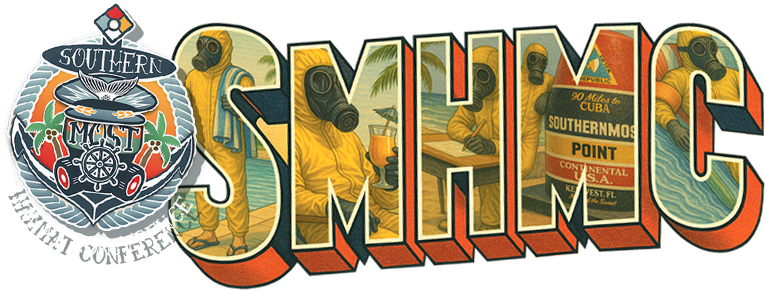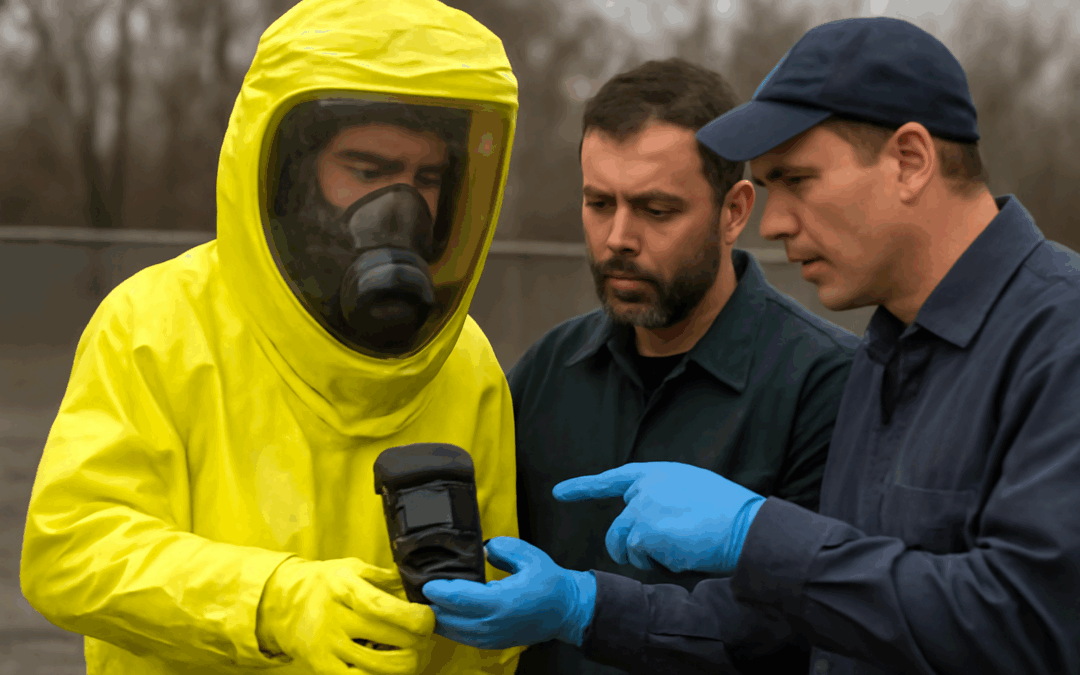“F the Basics”: Rethinking Hazmat Training with The Haz Mat Guys
Why Hazmat Training Needs a Shakeup
When I joined Bobby and Mike for this episode, I didn’t expect them to throw haymakers at one of the most common phrases in emergency training: “Back to basics.” But that’s exactly where we started.
Mike laid it out bluntly: “F the basics,” he said. Not because the fundamentals don’t matter – they do – but because rehashing them endlessly doesn’t move anyone forward.
And you know what? He’s got a point. Both Mike and Bobby have trained countless hazmat techs over the years, and they’ve seen the same trend. Too often, “going back to basics” becomes a crutch for instructors who are no longer keeping up. It’s not about reinforcing knowledge – it’s about lowering the bar.
“You’ve got to learn the fundamentals once. After that, every class should build on them,” Mike explained. Otherwise, you’re just insulting your students’ intelligence and wasting time.
Learning Should Never Be Static
One of the standout moments in our conversation came when Bobby talked about what happens after retirement. Hazmat, unlike many other fields, moves fast. New threats, new tech, and new methods show up constantly.
“There’s a definite expiration date after you retire,” Bobby said, “and if you’re not keeping up – reading, networking, listening – you become obsolete.”
It’s a brutal truth, but an important one. And it applies just as much to active responders who aren’t seeking out growth. Both Bobby and Mike stressed the importance of continuous learning – not just to stay compliant, but to stay competent.
It’s Not What You Teach – It’s How You Connect It
Instead of “basics” for the sake of basics, Bobby and Mike focus on making connections. Think of it like this: adults don’t remember isolated facts. They remember why something matters. That’s why Mike doesn’t just teach the definition of vapor pressure – he shows how it influences PPE choice, evacuation strategies, and meter readings.
“It’s not about teaching vapor pressure,” he said. “It’s about showing how vapor pressure affects the mission.”
This approach creates those “a-ha!” moments – the kind where a student’s face lights up because something finally clicks. That’s what real learning looks like. Not repetition. Relevance.
Scenario-Based Training That Actually Works
Mike and Bobby broke down their instructional model for metering: start simple, layer complexity, and build toward realistic problems. First, the student learns to dip a pH strip. Then they do it under pressure. Then they do it with misinformation. Finally, they’re asked to apply that skill in the middle of a chaotic scenario.
This “crawl, walk, run” method gives responders the confidence to act – not just pass a test.
And it’s not just talk. In their modular metering classes, each module focuses on a specific technology. So if your department doesn’t have mass spec? Fine. You’ll get a version of the class built around what you do have. Every scenario forces students to apply, adapt, and solve problems – not regurgitate facts.
Yes, Hydrogen Fluoride is a Serious Threat
We also tackled a common question: Do lithium-ion batteries release hydrogen fluoride (HF) when they burn?
Short answer: yes. Long answer? It’s worse than you think.
Mike referenced a 2017 study titled Toxic Fluoride Gas Emissions from Lithium-Ion Batteries that shows HF emissions spike as high as 150 ppm within eight seconds of a battery fire. That’s five times the lethal concentration for a 10-minute exposure.
Here’s the part that really matters for hazmat teams: the state of charge matters. Fully charged batteries release more HF. But even discharged batteries give off dangerous levels. And in confined spaces, that gas becomes deadly fast.
“Significant amounts of HF – between 20 and 200 milligrams per watt-hour – are released in battery fires,” the study notes. For something like a car battery, that could mean kilograms of toxic gas.
If you’re not treating every lithium-ion battery fire like an HF exposure, you’re playing with fire – literally.
Real-World Implications for Responders
Hazmat teams need to be aware of HF, not just in textbooks, but in tactical terms.
What can responders do?
- Wear the right PPE. That means respiratory protection capable of handling HF, and chemical-resistant suits.
- Use ventilation tactics. Even a few parts per million can do damage if the gas lingers.
- Understand your tools. Your meters may not even pick up HF. That’s why training on the technology itself – not just the gear model – is critical.
And that’s the point Bobby kept hammering home: understand the technology, not just the tool. If you know how a sensor works, you can adapt to whatever device is in your truck.
Stop Repeating – Start Teaching
What I took away from this episode was simple: stop lowering the bar. Stop teaching to the lowest common denominator. Raise the level of instruction. Trust your students to rise to it – and support them when they struggle.
Mike said it best: “You’re not going back to basics. You’re drawing new connections.”
That’s what creates smarter, safer, and more adaptable hazmat responders.
Final Thoughts
Hazmat isn’t what it was 10 years ago. The threats are different, the gear is better, and the training needs to evolve. If you’re still stuck in “back to basics,” it might be time to step aside – or step up.
And if you’re hungry for more, check out The Haz Mat Guys online or join one of their in-person modular metering classes. Because the more connections you make, the better responder you become.
What’s your take? Are we leaning too hard on the basics in your department – or have you found a way to keep things sharp? Share your thoughts below or send them to feedback@thehazmatguys.com. We might just feature your story on the next episode.



Many responders, and response teams across the nation resist “raising the bar” ie. Chemistry and Advanced Science courses from the NFA. Those two courses alone are beyond the basics and do exactly what Timmy is advocating here. This is the problem, organizations do not require their responders to attend these courses, give no “extra credit” incentives, and do not push their team to know WHY. I’ve had students, “Technicians” who cannot accurately define Flash Point. Until Special Operations Administrators raise the bar, it will remain basic. These courses, and others, are out there, waiting for responders to sit down and learn why.